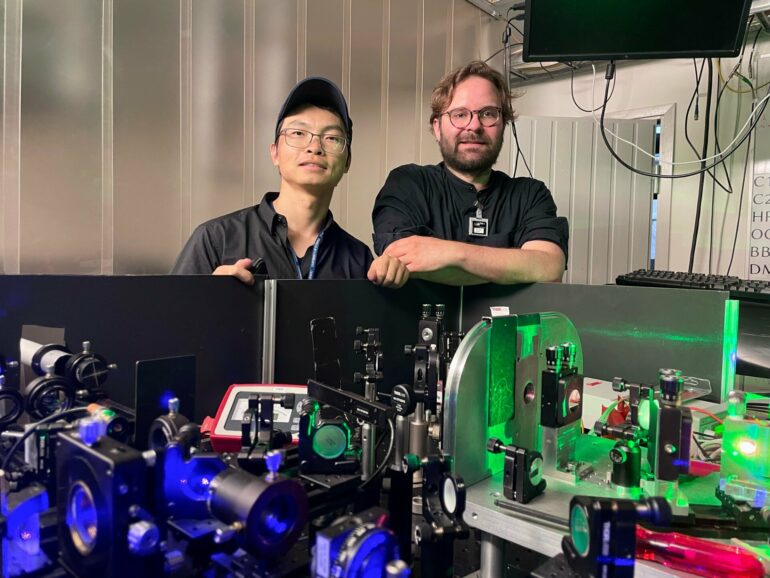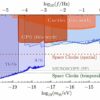Researchers from the Department of Physics of the University of Jyväskylä (Finland) have found new information about the strength of the so-called magic neutron number 50 shell closure in the silver isotope chain.
The new more detailed information on the properties of the nuclei will contribute crucial information for refining our understanding of nuclear forces. The research improves state-of-the-art theoretical models and thus benefits the global description of the atomic nucleus.
Nuclear physicists have focused their attention at the area below tin-100 (100Sn) on the nuclear chart. The area near tin-100, the heaviest doubly magic self-conjugate nucleus, exhibits diverse nuclear structure phenomena.
Essential nuclear properties, such as the binding energies of exotic nuclei in this region, are vital for assessing shell closure stability and the evolution of single-particle energies. Additionally, these properties aid in studying the proton–neutron interaction on long-lived isomers and the proximity of the proton drip line.
“Furthermore, binding energies offer essential data for accurately describing astrophysical processes like rapid proton capture. Precise nuclear data serve as a critical benchmark for theoretical predictions in nuclear physics, ensuring the accuracy and reliability of theoretical models.
“The charge radii behavior observed in our breakthrough work supported the magicity of N=50 in the silver isotopic chain,” explains Staff Scientist, docent, Mikael Reponen from University of Jyväskylä.
The study has been published in Physical Review Letters and is also a direct follow-up to the researchers’ previous publication in Nature Communications.
New technology for more detailed data
In the latest work, researchers have utilized an efficient hot-cavity catcher laser ion source coupled with a Penning trap mass spectrometer employing a state-of-the-art phase-imaging ion-cyclotron resonance (PI-ICR) technique. This has allowed the investigation of the magic N = 50 neutron shell closure in exotic silver isotopes in even more detail.
“The use of novel production methods for exotic nuclei, combined with high precision mass measurement techniques enabled the ground state masses of silver- 95−97 nuclei and the isomeric state in silver-96 to be probed with a precision of about 1 keV/c² even with yields as low as one event every 10 minutes,” says Academy Research Fellow Zhuang Ge from the University of Jyväskylä.
These new mass values quantify the robustness of the N = 50 shell closure in the silver isotopic chain and benchmark state-of-the-art nuclear ab initio, density functional theory, and shell model calculations near the N = Z line, continues Ge.
Theorists must replicate experimental results
The precise excitation energy of the silver-96 isomer serves as a benchmark for ab initio predictions of nuclear properties beyond the ground state, especially for odd-odd nuclei close to the proton dripline near tin-100.
Moreover, the first precise measurement of the excitation energy of the isomer of silver-96, as a possible astrophysical nuclear isomer, enables the ground state and isomer of silver-96 to be treated as separate species in astrophysical modeling.
“All applied theoretical approaches face challenges in reproducing the trend of nuclear ground-state properties across the N = 50 neutron shell and towards the proton dripline. Our measurements thus contribute crucial information for refining the nuclear forces to improve these theoretical models and thus benefit the global description of the atomic nucleus,” says Ge.
More detailed isotope measurements
This work highlights the scientific capabilities of the new experimental method employed for the first time at the IGISOL facility of the Accelerator Laboratory. The coupling of the phase-imaging Penning-trap mass spectrometer technique with the hot-cavity catcher laser ion source provides remarkably high sensitivity that enables high-precision mass measurements of exotic isotopes with exceedingly low yields.
“Ongoing studies, based on the achievements of this work, will shed light on the ground- state properties along the N=Z line in the immediate region below tin-100 in the near-future,” says Reponen.
More information:
Zhuang Ge et al, High-Precision Mass Measurements of Neutron Deficient Silver Isotopes Probe the Robustness of the N=50 Shell Closure, Physical Review Letters (2024). DOI: 10.1103/PhysRevLett.133.132503. On arXiv: DOI: 10.48550/arxiv.2401.07976
Provided by
University of Jyväskylä
Citation:
Accelerator lab provides detailed data on the ‘magic’ N=50 neutron shell closure (2024, September 27)



